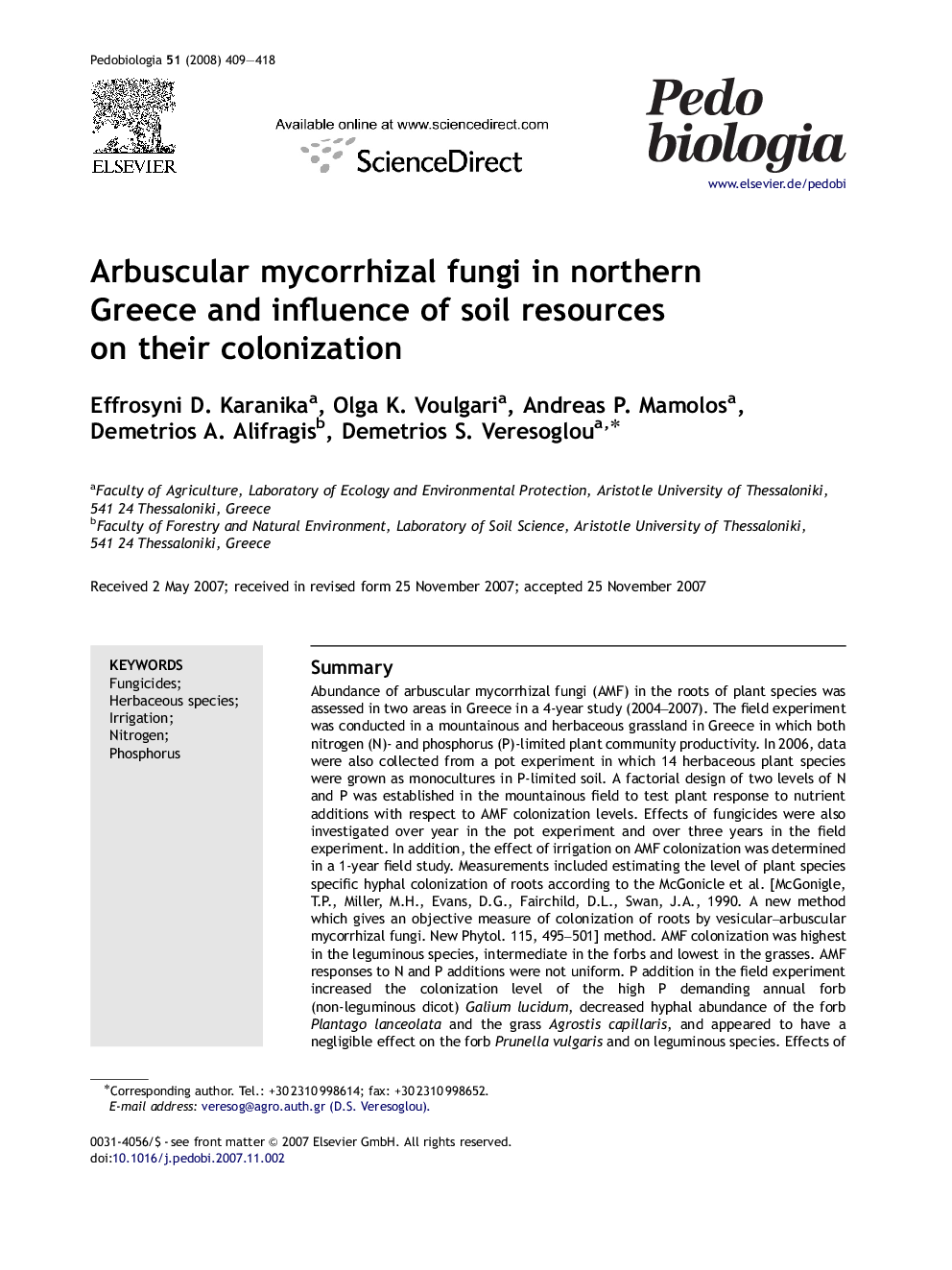| Article ID | Journal | Published Year | Pages | File Type |
|---|---|---|---|---|
| 2061369 | Pedobiologia | 2008 | 10 Pages |
SummaryAbundance of arbuscular mycorrhizal fungi (AMF) in the roots of plant species was assessed in two areas in Greece in a 4-year study (2004–2007). The field experiment was conducted in a mountainous and herbaceous grassland in Greece in which both nitrogen (N)- and phosphorus (P)-limited plant community productivity. In 2006, data were also collected from a pot experiment in which 14 herbaceous plant species were grown as monocultures in P-limited soil. A factorial design of two levels of N and P was established in the mountainous field to test plant response to nutrient additions with respect to AMF colonization levels. Effects of fungicides were also investigated over year in the pot experiment and over three years in the field experiment. In addition, the effect of irrigation on AMF colonization was determined in a 1-year field study. Measurements included estimating the level of plant species specific hyphal colonization of roots according to the McGonicle et al. [McGonigle, T.P., Miller, M.H., Evans, D.G., Fairchild, D.L., Swan, J.A., 1990. A new method which gives an objective measure of colonization of roots by vesicular–arbuscular mycorrhizal fungi. New Phytol. 115, 495–501] method. AMF colonization was highest in the leguminous species, intermediate in the forbs and lowest in the grasses. AMF responses to N and P additions were not uniform. P addition in the field experiment increased the colonization level of the high P demanding annual forb (non-leguminous dicot) Galium lucidum, decreased hyphal abundance of the forb Plantago lanceolata and the grass Agrostis capillaris, and appeared to have a negligible effect on the forb Prunella vulgaris and on leguminous species. Effects of N addition were influenced by P addition and were only significant in plots not enriched with P where N addition increased the AMF colonization. Irrigation increased colonization of the tested species A. capillaris and P. lanceolata but only significantly increased that of P. lanceolata. There was interannual variation in the effects of fungicides on AMF colonization, which was partly due to differences in the active ingredient and formulation used. Among the tested species, A. capillaris was the most susceptible to fungicides.
